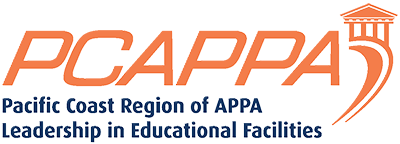PCAPPA Blog
PCAPPA member chosen as IFMA Top Global Influencer
 PCAPPA member Winnie Kwofie has been selected by IFMA as one of its top global influencers. IFMA says, “These leaders are redefining what is possible in facility management. Through bold ideas, measurable results and a commitment to progress, they’re elevating the profession and inspiring a global network.” Read more here >>
PCAPPA member Winnie Kwofie has been selected by IFMA as one of its top global influencers. IFMA says, “These leaders are redefining what is possible in facility management. Through bold ideas, measurable results and a commitment to progress, they’re elevating the profession and inspiring a global network.” Read more here >>
The 2024 PCAPPA conference was a huge success
Held at the Davenport Grand Hotel in Spokane, Washington, October 21-23, 2024 the conference was titled Engaging Minds and Empowering Success. Professionals and industry experts shared knowledge, ideas, best practices and more. Thank you to all who worked to make the event so successful!
“This was my first PCAPPA event and it exceeded my expectations. The MC set the pace with engaging, fun team building activities which were followed by informative breakout sessions and numerous networking opportunities. The entire PCAPPA Board was super friendly & helpful, thank you!” – Jolyce Ledvina, San Jose State University
“This was my first time at PCAPPA. I am somewhat familiar with APPA from previous employment with K-12 educational institutions. My takeaway from this conference is that there are many opportunities that wait to be utilized, and I am ready to tackle long sitting issues with renewed energy and new ideas. The PCAPPA leadership and board members were engaging and ready for conversations and bringing their expertise to the table. I specifically enjoyed my one-on-one time with Dr. Ayo Akinola and Lalit Agarwal and look forward to more conversations and additional opportunities to keep in touch and staying connected.” – Michael von Cappeln, WSU Tri Cities
“Great conference this year. Looking forward to attending in future years.” – Bryan Archibald, UBC
Facilities professionals are among unsung heroes on campus
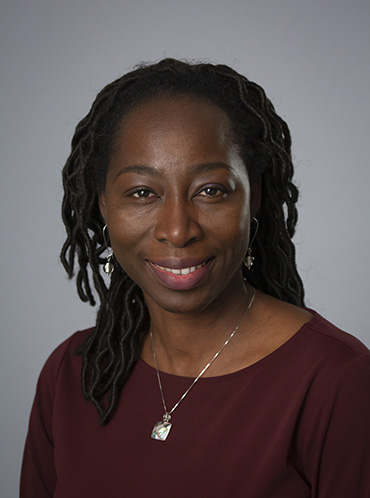 PCAPPA member Winnie Kwofie is quoted in an article in Higher Ed Jobs about the unsung heroes on campus.
PCAPPA member Winnie Kwofie is quoted in an article in Higher Ed Jobs about the unsung heroes on campus.
Author Leah Jackson poses the question, “How often do students, faculty, and staff think about who makes sure the gym is clean, the lights are on, the water is flowing, and the machines are operating?”
Winnie Kwofie, who has extensive executive leadership and management experience in facilities management, said “If you drive to campus, there’s a road that brings you to campus — that’s facilities management. We’ve got to do the landscaping so that you’re not going through the bushes when you’re moving into the dorm. That’s facilities management.”
From lighting on campus walkways to functioning cooling/heating and clean floors, you can thank facilities management.
PCAPPA women presidents
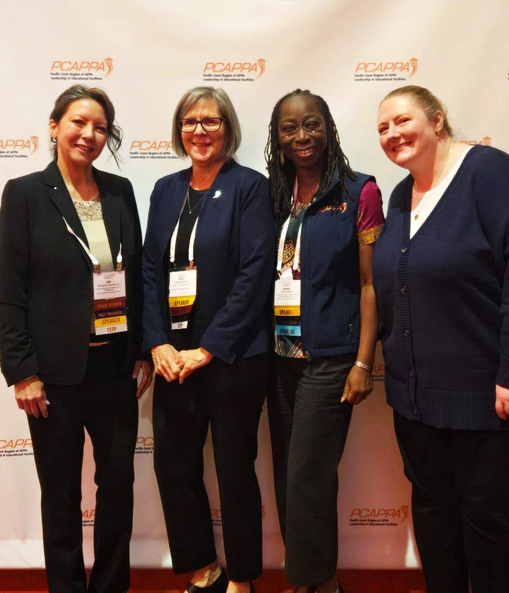 Seen at our 2024 conference in Spokane — this great photo of four past women presidents of PCAPPA!
Seen at our 2024 conference in Spokane — this great photo of four past women presidents of PCAPPA!
Women in facilities are making changes and spurring innovation. We are proud of these four stellar contributors and of all the women in PCAPPA and the broader facilities profession for the work they do moving the profession forward.
PCAPPA member on a podcast
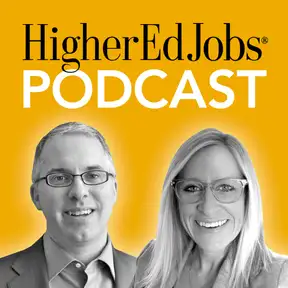 In this episode of the HigherEdJobs podcast, PCAPPA member Winnie Kwofie shares her thoughts on encouraging women to explore a career in Facilities Management. Kwofie, who has overseen facilities management teams in public and private higher education institutions, describes the field as integrating people and processes in one place.
In this episode of the HigherEdJobs podcast, PCAPPA member Winnie Kwofie shares her thoughts on encouraging women to explore a career in Facilities Management. Kwofie, who has overseen facilities management teams in public and private higher education institutions, describes the field as integrating people and processes in one place.
She is passionate about increasing awareness about the diverse and interesting roles in facilities management. Currently, on HigherEdJobs, there are 4,300 open positions listed.
The U.S. Department of Labor describes the field as “non-traditional,” which could dissuade some women from applying for these roles. Through her research, Kwofie has seen first-hand how a lack of awareness about these roles contributes to unfilled positions and job seekers still searching for that perfect role. Listen here >>
Women Leading the Way in Facilities Management
 PCAPPA member Winnie Kwofie, former associate vice president of facilities development and operations at California State University East Bay, describes her career path and research on women in facilities management.
PCAPPA member Winnie Kwofie, former associate vice president of facilities development and operations at California State University East Bay, describes her career path and research on women in facilities management.
Kwofie is a licensed civil engineer in the state of California and she recently successfully defended her doctoral dissertation, with an emphasis on educational leadership for social justice. She offers tips for institutions that want to support female leaders and talks about a program she created with colleagues to increase the presence of women in facilities management leadership. Read the interview here >>
PCAPPA member in the news
 PCAPPA’s own Nicole Sanderson is featured on the ARC Facilities website!
PCAPPA’s own Nicole Sanderson is featured on the ARC Facilities website!
Once again, PCAPPA members are leading the charge in gaining recognition for the educational facilities profession.
Dec 2023 Member Spotlight: University of Nevada, Las Vegas
 UNLV led a division-wide strategic plan that supports and informs Facilities Management, Planning & Construction, Real Estate, Administrative Services, Budget, and Financial Service departments. The emphasis on strategic planning is so important in helping individuals and teams align with the mission of clarity in their work. While the roadmap is fluid, that helps people keep on the path forward and provides a framework of how people will prioritize their time, effort, and resources.
UNLV led a division-wide strategic plan that supports and informs Facilities Management, Planning & Construction, Real Estate, Administrative Services, Budget, and Financial Service departments. The emphasis on strategic planning is so important in helping individuals and teams align with the mission of clarity in their work. While the roadmap is fluid, that helps people keep on the path forward and provides a framework of how people will prioritize their time, effort, and resources.
The strategic plan work group includes: Chantel McDonald, Sarath Kraus, Dr. Michael Lawrence, Connie Gamble, Michael Wolfe, Alex Nikolich, Elise Bunkowski, Lori Church, Kahaunani Hernandez, Musa Pam, Laura Schneider, and Kim Case-Nichols. Learn more
Nov 2023 Member Spotlight: Simon Fraser University
 Simon Fraser University cut greenhouse gases by more than 50 percent from 2007 levels in 2021, exceeding provincial interim targets and even topping the university’s Race to Zero targets. Learn more.
Simon Fraser University cut greenhouse gases by more than 50 percent from 2007 levels in 2021, exceeding provincial interim targets and even topping the university’s Race to Zero targets. Learn more.
TMCC: A Facilities Commitment to Environmental Sustainability
 by Dr. Ayodele Akinola, DBA, MBA, LSSBB, NCBITL, NCTITL
by Dr. Ayodele Akinola, DBA, MBA, LSSBB, NCBITL, NCTITL
TMCC Assistant Director, Facilities Operations and Capital Planning
Despite the COVID-19 pandemic, the commitment of Truckee Meadows Community College (TMCC) to environmental sustainably from architecture to infrastructure in the creation and responsible management of a healthy environment is firm. Practical aspects of sustainability initiatives are imperative issues with visible impacts and environmental relationships (Sheard, 2001).
Our sustainability efforts are delivered through the commitment to reduce greenhouse gas emissions. The commitments are crucial to the achievement of global climate goals in the mitigation of climate change.
They are deployed through various strategies that focuses on practices, partnerships, and initiatives, to confront the 21st century climatic challenges. These strategies are holistic and collaborative in scope, yet measurable, giving many benefits to students and the entire community. These sustainability efforts include:
Practices
Maintenance Department:
TMCC generates supplemental energy from solar arrays across three campus locations. Power generation from these solar arrays between July 2019 and June 2020 totaled 233,275 kWh. Renewable energy resources from solar is accompanied by economic and technical issues correlating with the integration of photovoltaic (PV) systems into the grid (Pazikadin, Rifai, Ali, Malik, Abdalla, & Faraj, 2020). Alleviating these technical concerns involves ensuring optimal grid control and power management from PV systems, necessitating frequent inspections. TMCC deploys periodic unmanned aircraft system (UAS) aerial infra-red (IR) thermographic scans to evaluate panel condition, efficiency losses, structural integrity, and system evaluation of our PV systems.
TMCC also deploys a firm energy-conservation protocol through numerous practices to include: (a) Replacement of old incandescent lighting with LED lights, (b) Installation of high efficiency boilers, heat pumps, and air-conditioning that reduces carbon footprints. (c) Upgraded our campus wide building management system to the Allerton Compass Ascent system that allows a convenient and easy interface for building optimization/control, to achieve better-integrated and high performance buildings. (d) Deploys facilities condition assessment, making energy efficiency and sustainability a priority. (e) TMCC installed lighting sensors to automatically turn-off lighting when not in use, and conserve energy, to include the parking lots.
Design and Construction:
Owing to the increased application of sustainability design concepts to the construction of sports and fitness facilities over the last decade (Erten & Ozfiliz, 2006) and the quest for diminution in the negative impacts of greenhouse gases (Kellison, Trendafilova, & McCullough, 2015), TMCC continues to incorporate sustainable design and construction practices. These practices include: (a) Installation of flooring that only requires water cleaning. (b) Installation of smart irrigation system for water conservation. (c) Constructed the new Fitness Center to a LEED silver equivalency. (d) Installation of a V2T roofing system on our Red Mountain Building. The V2T roof system utilizes the venturi principle to capture the dynamic flow of air across the roof surface to generate lower pressures below the roof membrane. The V2T roof system eradicates the necessity to use screws and adhesives, taking advantage of wind power. Negative air pressure eradicates excess air under the roof membrane to produce a suction effect that strengthens the roof system. “V2T is combination of vents and air channels that work together to hold the roof membrane in place. Traditionally, roofs have used ballast, adhesives, or mechanical fasteners to adhere the membrane to the roof deck, but in this case we took advantage of wind power.” – V2T Roof Systems. The V2T roof system is a green technology. According to the manufacturer “in the United States, moisture approximately lead to a 40% overall reduction of the R-value of insulated roofing insulation (Kyle & Desjarlais, 1994, as cited by www.v2troofsystem.com). The extreme degradation of the insulation’s thermal resistance may increase energy loss through building roofs by 70% (Desjarláis & Byars 1998, as cited by www.v2troofsystem.com) and may increase peak electrical demand for preconditioning by 15% (Kyle & Desjarlais 1994, as cited by www.v2troofsystem.com).
According to Desjarlais and Byars (as cited by www.v2troofsystem.com), moisture has been a major cause of re-roofing in the United States, which accounts for 75% roofing work, and has become a multibillion-dollar problem in the roofing industry. The V2T Roof System uses the power of the wind to create suction between the roof membrane and substrate (venturi effect) – the stronger the wind blows, the tighter the roof holds. This suction increases the potential for removal of moisture from the roof system” – V2T Roof Systems.
HVACR Department:
In addition to energy efficiency through our BMS system, the HVACR section is committed to the path to eliminate hydrochlorofluorocarbons (HCFC – better known as R-22 refrigerants) and hydrofluorocarbons (HFC) refrigerants. These refrigerants are powerful greenhouse gases. Refrigerants exhibiting a lower global warming potential (GWP) is better suitable for emission reduction (Shaik, Shaik, Gorantla, Mahapatra, & Setty, 2020). Refrigerant replacement is dependent on energy efficiency and indirect emissions from use. R22 refrigerants produces higher CO2 emission and a reduced thermodynamic performance in comparison to R1270, RM30, RM50, and R290, which can be considered environmentally friendly alternatives to R22 (Shaik, Shaik, Gorantla, Mahapatra, & Setty, 2020). The Montreal Protocol alluded to the phasing out of R22 owing to the unfavorable environmental impacts, pushing for using R407c refrigerant as a replacement to R22 (Kasera & Bhaduri, 2017). Although R407c has a zero ozone depletion potential (ODP) and reduced global warming potential (GWP) as compared to R22 (Kasera & Bhaduri, 2017), R407c is still a blend of HFC, with a reduced performance to R22. TMCC’s HVACR department commits to focusing on (a) the employment of a very robust refrigerant management system that includes migration to environmentally friendly refrigerants (R290) through gradual replacement and retirement of systems. (b) Maintenance of equipment and refrigerant inventory. (c) Deployment of HVAC system condition monitoring through our Building Management System (with remote adjustments and automatic adaptation to atmospheric temperature changes). (d) Maintenance of proper refrigerant classification, reclaim, and recycling in U.S. Environmental Protection Agency (EPA) certified concealed recovery cylinders. (e) Deployment of prompt replacement of obsolete systems to greener systems using less energy and low global warming potential (GWP). (f) The implementation of night set back modes through our BMS controllers for our HVACR system to control temperatures and pump operation during unoccupied hours for energy efficiency, and (g) the utilization of an Energy Recovery System that utilizes building thermodynamics, such that normally exhausted air treats the incoming ventilation air; using heat from the exhaust airstream during cooler season to preheat and humidify the incoming ventilation air.
Custodial Department:
TMCC Custodial department is committed to utilizing ecofriendly cleaning products with ECOLOGO certification and Green Seal that guarantees compliance with the environmental performance standards. Examples include: (a) The EPA registered Clorox Total 360 Electrostatic Disinfectant System that employs 65% less solutions, through the innovative and patented electrostatic sprayer for effective disinfection and sanitization. (b) Deployment of Green cleaning operations for floor cleaning and polishing, using the ec-H20 technology that uses water. No detergent, no emission, no energy loss, no acid, no eutrophication (enrichment of an ecosystem with chemical nutrients), no particulates, but just water. Water is electrically converted into an innovative detergent-free solution for cleaning. In addition to this commitment, TMCC deploys an efficient waste recycling plan that manages and reduces waste, recovering valuable resources, and creates a clean environment.
COVID Cleaning:
Challenges with disinfection emanates such that when common surfaces and touch-points are cleaned and disinfectants applied, there are no effective residual protection left behind after disinfection. With no effective residual protection, microbes such as SARSCoronavirus-2 (COVID-19) then thrives. TMCC deploys Bioprotect on our campus locations to help with the COVID-19 pandemic. BIOPROTECT™ is an EPA registered, waterbased (90% water), antimicrobial technology that provides persistent and continuous protection of a surface for more than six weeks (GVN Press Image retrieved from www.bioprotect.us Release, 2020; Rega Institute, 2020; Viaclean Technologies, n.d.). BIOPROTECT™ is a preservative antimicrobial coating that can be applied to both porous and non-porous surfaces to destroy microbes. When applied, the BIOPROTECT™ coating forms a layer of spikes each of which carry a positive charge that attracts the negatively charged COVID-19 microbe. Once attracted to the sprayed surface, the molecular nano-spikes pierce the COVID-19 cell and rupture its cell membrane, causing the microbe to die. Bioprotect is: (a) Water-based antimicrobial technology that is applied after surfaces are cleaned with disinfectants. (b) Creates an invisible layer of spikes on a surface that binds to almost any porous and non-porous surfaces and mechanically kill microbes (bacteria, virus, molds, fungus) (c) Provides persistent and continuous protection – efficacy remains active on surfaces for up to 90 days. (d) Approved for use as an antimicrobial preservative under EPA and FDA regulations to preserve food contact articles. (e) Can be used on food surfaces, appliances, equipment and utensils. No rinse required for food surfaces. (f) EPA-registered and made in the USA
Grounds Department:
Huge on promoting and maintaining a balanced environment, TMCC achieves these by: (a) Landscape water conservation, that involves constant monitoring and modifications to our irrigation system. We utilize landscape conditions and local weather to tailor irrigation scheduling to site conditions instead of always using preset scheduling, thus avoiding overwatering. (b) Utilization of grasscycling and leaf collection practice that converts grass clippings to mulch and compost for planters, which decompose quickly, naturally infusing nitrogen and other nutrients back into the soil to improve lawn quality. (c) Tree limbs are periodically pruned, chipped, and used as mulch, consequently reducing waste hauled to landfills. (d) Utilizing organic and natural practices to control landscape insect infestation. This includes the application of neem oil, application of insecticidal soap, and the release of lady beetles to control aphids. Insecticidal soaps are long chain fatty acids that occur naturally as coconut oil and palm oil. It is environmentally friendly, with a low mammalian toxicity. With the release of lady beetles to control aphids, Lady beetles are voracious aphid eaters and will eat more than 50 aphids daily. (e) Implementation of an integrated pest management (IPM) approach. IPM is a green strategic eco-system based pest prevention. This green pest control initiative employs and uses natural resources to control pests. Utilizing low and non-toxic pest control mitigates the domino effect of killing an entire food chain. Imagine feeding poison to a mouse, cat eats mouse, raccoon eats cat, and mountain lion eats raccoon. This consequently kills an entire food chain, which negatively affects a balanced ecosystem. Our green pest control initiative preserves wildlife habitats and creatures that surround our campus spaces.
Yields from Energy Efficiency Investments (Updated May 2020):
Yields from energy efficiency investments include: (a) significant reduction in heat consumption per square foot, as compared to median similar buildings in our climate zone. (March 2019 to Feb 2020: TMCC: 58.8 KBtu, Others: 82.9KBtu). (b) Increased Energy Star score according to our EPA portfolio manager rating at eligible building types. The Energy Star score provides a comprehensive snapshot of a building’s energy performance. It assesses the building’s physical assets, operations, and occupant behavior in a quick and easy-to-understand number. (c) Reduced energy cost per student, which falls below the median for similar buildings in our climate zone (Spent $1.06 on energy costs per student, compared to $1.26 per student in our climatic zone, and $1.46 per student for the 2020 baseline benchmarking study.)
Partnerships
TMCC exemplified leadership through collaborating with NV Energy in the NVGreenEnergy Rider renewable energy agreement. TMCC achieved this sustainability goal by offsetting 100% of our electric load service with renewable energy resources from NV Energy. This involved a computation of the total electrical energy consumption across all TMCC sites in kilowatt-hour, offset with all generations from all renewable sources, considering anticipated consumption for ongoing and future projects. TMCC achieved this renewable energy aspiration, utilizing 100% clean electric energy, and are proud to be the:
• 1st Institution of Higher Learning in Nevada
• 1st Institution within the Nevada System of Higher Education (NSHE) system, and the
• 1st Institution in Nevada to make the State’s boldest renewable energy commitment
Initiatives
Other initiatives deployed at TMCC includes (a) a bike repair station, to enhance the biking experience of students, faculty, and staff members. The Bike Repair Station has a repair arm and tools necessary to perform basic bicycle repairs. (b) Hydration and water bottle filling stations to encourage reductions in plastic water bottle utilization and disposal. (c) Electric vehicle (EV) charging stations.
Kim Case-Nichols’s Journey Down APPA/PCAPPA Lane
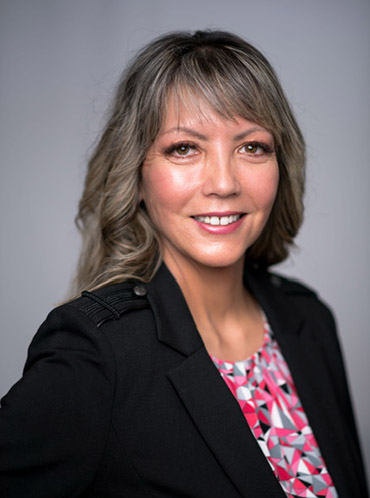 Nov 12, 2020
Nov 12, 2020
When asked how in the world I went from a flight attendant career to Executive Director of Space and Facilities Management in higher education, I easily explain it was my APPA experience. Through systematic planning, organizing, and adapting to constant change, I evolved into the perfect nontraditional career.
I began my facilities management career over 16 years ago in northern California and landed in Nevada in 2010. I was fortunate to start my Stanford University career who heavily participated in APPA professional development opportunities. I quickly realized the benefit of adopting APPA industry standards and practices that made Stanford a well-oiled facility management machine. My introduction to APPA as a young facilities professional was the Supervisor’s Toolkit. After completing this intensive course, it is fair to say I drank the APPA Kool-Aid.
Over the next several years, I maximized the APPA resources. I networked with APPA members to learn about staffing models, custodial benchmarking, and building sustainability practices. I used the APPA tools and business partners to complete numerous facility audits that helped me validate aging facilities and advocate for capital planning projects.
I continued my journey attending the Facilities Institute 4-track program and earned my Certified Educational Facilities Professional (CEFP) credential. After ten years as an APPA member, I got involved with the Pacific Coast Region, PCAPPA, to continue my professional growth and give back to the membership. I joined the Membership Committee and was elected to the board as the Membership & Community Engagement Chair for the past three years. I collaborated with the board to spearhead a diversity and inclusion initiative, created our social media presence, and successfully facilitated our first virtual summit. As a recipient of the APPA President’s Unsung Hero Award, I am incredibly humbled by the support of APPA and the membership.
In reflection, I joined APPA as a hungry facilities professional looking for information and hoping to network. Not only did I find what I was looking for, but I have also made lifelong friends and found an affinity group that strategically helped me grow my career.
Nicole Sanderson’s APPA/PCAPPA Journey
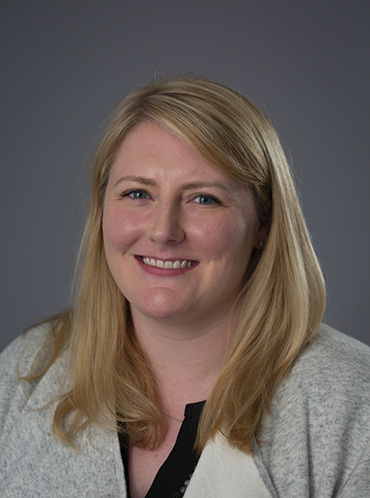 Oct 7, 2020
Oct 7, 2020
Being recognized as an APPA Pacesetter this year 2020 was the culmination of over 10 years of involvement in APPA and PCAPPA. For me, figuring out how to get involved was the hardest part of my APPA/PCAPPA journey.
I hope you are reading this because you are interested in getting involved too – if so, you have come to the right place! I have a few suggestions for ways to get involved with APPA and PCAPPA.
1. Get involved locally: In my area, I started attending the Northwest APPA (NWAPPA) local workshops. It was a quick, easy, and local way to meet other facilities professionals in my immediate area and learn more about emerging facilities topics. I now service as the NWAPPA treasurer and help plan regional workshops.
2. Join a committee: In my home region of PCAPPA, our board has many committees you can join to get your feet wet in getting involved and expanding your facilities network. If you have an interest in research, professional development, and awards and recognition among others, joining a committee is a great way to start. Reach out to a board member to find out more about how to get involved.
3. Attend a PCAPPA conference: Each fall, PCAPPA hosts a regional conference for our members. These conferences allow you to learn about all the hot topics affecting facilities professionals across our region and meet new colleagues and business partners. This year, our conference is virtual so you can do all these things from the comfort of your home or
office.
4. Connect with a mentor: Finding a mentor within the PCAPPA region is a double bonus – not only will you have a resource to help tackle your challenging work issues, your PCAPPA mentor can also help you navigate getting involved with PCAPPA. Reach out to a board member to start!
Taking the initial step to get involved in PCAPPA is the hardest part. Take that initial jump and get involved today! I have found that I have gotten so much more out of being involved in PCAPPA than I have put in.
Tony Ichsan’s APPA Journey
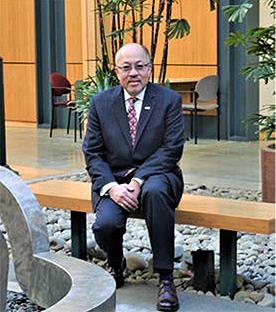 Sept. 28, 2020
Sept. 28, 2020
With over 30 years of higher education experience in California, Oregon and Washington, Tony Ichsan has enjoyed a wide variety of responsibilities at various higher education institutions including independent (private) residential colleges, community colleges and a public research university. As an educational facility professional, PCAPPA and APPA have played an integral part of his journey.
Early on, Tony was fortunate to have had the support and encouragement of his then Director to attend PCAPPA local meetings and annual conferences. Soon came forays into regional engagements, and hosting an annual PCAPPA conference which led to his participation in APPA’s international conferences and contributions as researcher, author, faculty, conference presenter, and subject matter expert. Over the years, he reviewed and supported the launching of key initiatives: Credentialing, Emerging Professional, Sustainability, Code Advocacy, Awards for Excellence, and Community College Engagement. Tony credits this long-term APPA partnership for its direct benefit to his institutions and facilities teams by providing essential resources to implement best practices and continuous improvement.
Having had several great PCAPPA and APPA mentors along the way, Tony has always been excited and willing to give back to his colleagues by “paying it forward”, and this engagement resulted in many appointments and nominations:
PCAPPA
• Various committees/task forces
• Board positions such as
o Awards and Recognition
o Professional Affairs
o Secretary
o President
APPA
• Various committees/task forces
• Board positions such as
o Junior Regional Representative
o Senior Regional Representative
o Executive Board — Chair of the Senior Regional Representative
Tony is extremely honored to have been recognized by his colleagues for his tireless contributions, and he is proud to have been chosen to receive the highest individual awards in both PCAPPA (Distinguished Leadership Award), and APPA (Meritorious Service Award), as well as this year’s APPA President’s
Award.
Currently the Director of Facilities at Whitman College in Walla Walla, Washington, Tony is still enjoying higher education and having a good time working in Facilities. Responsible for the College’s built and natural environment, his portfolio includes programs such as: planning/design/construction, operations (maintenance/grounds/custodial), sustainability, environmental health and safety, energy management,
conference/events/scheduling.
As a life-long learner, Tony continues to expand his knowledge by engaging with other educational facilities professionals and pays it forward by mentoring and supporting the development of future facilities leaders.
Why take the APPA Supervisor’s Toolkit
 by Erik Diaz
by Erik Diaz
Landscape Supervisor
Facilities Management Services
University of Southern California
March 2, 2020
I have gone through the Supervisor’s Toolkit twice in the last 4 years. I can honestly say it is a necessity for every Supervisor who manages a team of people. Just as anyone needs to be trained to properly operate an equipment, the toolkit is the practical way to develop every supervisor. The toolkit improved my skills from the various standpoints of
a. Effective communication,
b. Engaging in the difficult conversation
c. Team motivation
d. Being an effective leader.
The Supervisor’s Toolkit gave me the opportunity to get out of my perceptive bubble and learn from other experiences, especially how things are done at other institutions.
The Supervisor’s Toolkit offered different perspectives from individuals dealing with similar issues at their institutions. Another great thing about the Supervisor’s Toolkit is that once you finish the course, you always have the material available to you. You have something to go back to as a reference as you practice and develop your skills.
My Yelp rating of 5 to the APPA Supervisor’s Toolkit. I highly recommend all current supervisors and prospective supervisors take this course.
Spotlight on the next generation
by Natalie Gunn, a student at Washington State University
If you asked me a year ago what the Facilities Services department at my school did, I would tell you I didn’t know that our school had a facilities department, and I definitely didn’t know what they did. It’s crazy how all of that has changed in a year. Since learning about my university’s Facilities Services, not only have I been able to have an internship within the department, but have had many amazing opportunities outside of the school; opportunities like the PCAPPA Conference.
Going into my last year of studying architecture, after interning in WSU’s Facilities Services Capital department, I had a deeper appreciation for what Facilities did for my university; in fact it had nudged me in the direction of working in a facilities management position once I graduate. But none of my work in facilities seemed legitimized until I went to the PCAPPA Conference.
From the start of the conference with a Women’s in Facilities mixer to end with an Awards dinner, I was surrounded by professionals who were passionate about facilities. Whether they were facilities directors, project managers, contractors or suppliers; each person was eager to share with me where they came from, their jobs, and what they aspire to accomplish, and even give some helpful advice. From sitting in educational sessions to electric scootering to dinner with new friends, the PCAPPA Conference offered opportunities for networking, learning and socializing in the professional world that most students are never exposed to otherwise. My hope is that not only will more students attend the PCAPPA Conference and get more involved in facilities; but they will have as good of an experience as I did meeting new people and expanding my knowledge on the many aspects of facilities profession.
